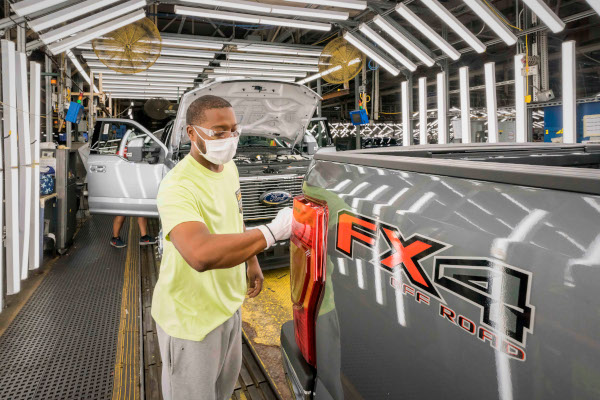Suppliers Could Take the Biggest Hit from Auto Union Strike
Downstream is where any prolonged strike may find its biggest victims
As the United Auto Workers (UAW) continue to negotiate with the “Big Three” U.S. automakers—General Motors, Ford and Chrysler maker Stellantis—over a new labor contract, the implications on an already burdened supply chain could be significant.
The current contract is set to expire at 11:59 on Thursday, with the union voting to authorize a strike in case agreements were not made. The UAW is seeking a 40% wage hike over four years (amounting to 46% compounded), along with cost-of-living increases, additional retirement benefits, and a shortened workweek.
Supply chain professor Jason Miller estimates a strike on all three automakers could result in a 15% decline in output. And if it lasts all through October, he predicts output could be closer to 30% below the estimate for September. He notes the September estimate places output about where it was at in the worst of the 2021 parts shortages, and the October estimate is in line with March 2020, when automakers shut down towards the end of the month in response to COVID-19.
“Many suppliers were crippled during the pandemic, and they have cashflow issues that they're trying to recover from. This could cripple them further toward potential bankruptcy, so this does have quite a significant impact after what we've been through the last couple of years, above and beyond normal strikes.”
“If we see a prolonged strike by the UAW at the domestic U.S. Big 3 automakers, we will undoubtedly see a deepening of the current freight recession,” says Miller in a LinkedIn post.
Production slowdown for these major automakers aside, the biggest impacts are more likely to be felt in waves down the supply chain.
“The demands that they're placing on the auto manufacturers are significant, and the challenge that we have is not necessarily just the prime companies, the three manufacturers, but you’ve got your suppliers, your tier 1 all the way to tier 2, tier 3 suppliers, who don’t have the resources or the buffer stock that the prime does,” says Abe Eshkenazi, CEO of the Association of Supply Chain Management (ASCM).
Compounding disruptions put suppliers at risk
Historically, the auto industry has operated on a just-in-time inventory model—low inventory levels, fewer suppliers, all in a relatively short timeframe. Following the pandemic, many companies moved to a just-in-case model, which increased their buffer stock and inventories to add flexibility for future disruption.
The problem, Eshkenazi says, is that while companies already have higher inventory levels than pre-pandemic times, they’ve run out of warehouse space to increase levels any higher.
“If I'm going to prepare for a strike, I'm going to increase my inventories; well, they’re already increased, and I don’t have any space,” says Eshkenazi. “There’s no warehouse space, there’s no extra capacity to put all these parts and all these all the necessary raw materials to produce the cars…In a perfect world where we didn’t have all the disruptions already, you may be able to extend the ability to produce beyond the four to six weeks, but right now, that looks fairly tight.”
The biggest challenges will be for small- to mid-sized companies which are less likely to have the resources to withstand another major disruption.
“There’s a lot of pre-planning, in terms of what parts can we protect more of in the event that this happens, but there is absolutely no way that you can mitigate everything,” says Lisa Veneziano, chair of the board at ASCM.
Pamela Dow, chair-elect at ASCM, adds that holding excess inventory also has impacts cashflow—another sore spot for suppliers following the pandemic.
“Many suppliers were crippled during the pandemic, and they have cashflow issues that they're trying to recover from,” says Dow. “This could cripple them further toward potential bankruptcy, so this does have quite a significant impact after what we've been through the last couple of years, above and beyond normal strikes.”
Article Topics
Ford News & Resources
C.H. Robinson President & CEO Bozeman provides overview of key logistics trends and themes at SMC3 JumpStart 2024 Suppliers Could Take the Biggest Hit from Auto Union Strike Ford Challenge to Create ‘Last Mile’ Mobility Solutions CSCMP’s Hall of Fame Ex-IM loan to Ford may enhance supply chainLatest in Transportation
Baltimore Opens 45-Foot Deep Channel Following Bridge Collapse El Paso Border Delays Cost Juarez $32 Million Per Day in Economic Losses Ranking the World’s 10 Biggest Supply Chains The Top 10 Risks Facing Supply Chain Professionals Walmart’s Latest Service: Ultra Late-Night Delivery City of Baltimore Files Lawsuit to Recoup Money for Collapsed Bridge The Era of Self-Driving Tractor-Trailers Set to Begin More TransportationAbout the Author











